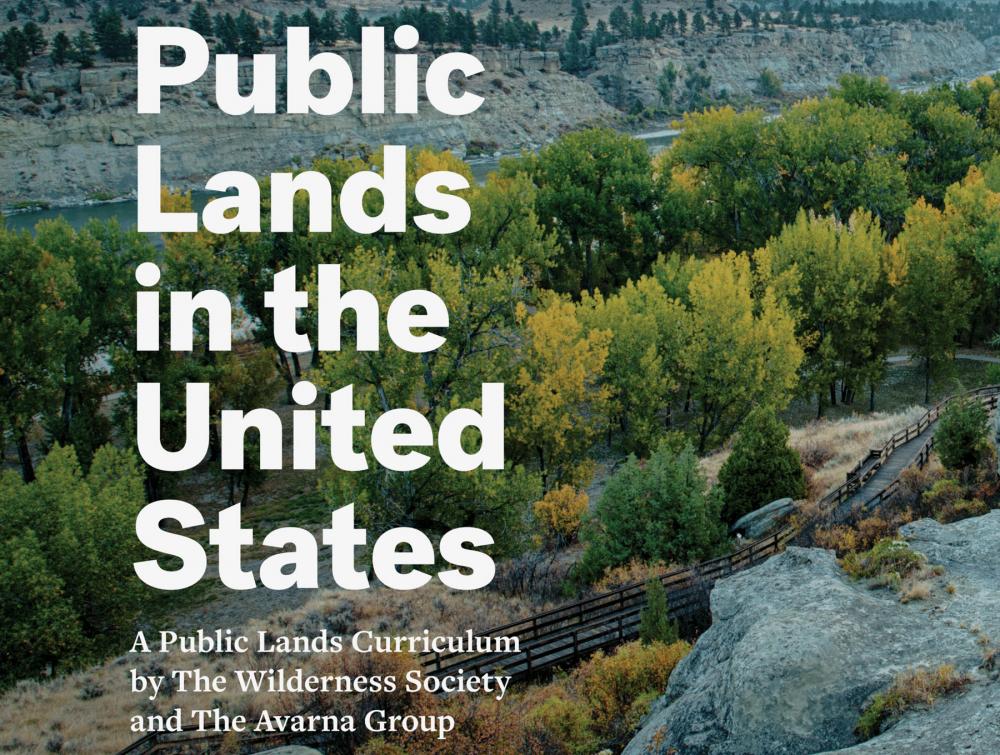Spend Public Lands Day learning a more holistic version of history

Resource aims to help a new generation understand a more authentic version of public lands history in hopes of creating a more equitable future.
WASHINGTON, DC (Sept. 19, 2022) — There’s no better time to relearn everything you think you know about public lands than by diving into a more authentic, holistic and sometimes unpleasant version of public lands history than on Public Lands Day, which is Saturday, Sept. 24.
While the mainstream conservation narrative celebrates predominantly white males for protecting “pristine, untouched” wilderness and the establishment of national parks, that isn’t the full story.
In an effort to tell a more authentic and complete history of public lands in the United States, The Wilderness Society, in collaboration with organizations and individuals representing a wide range of racially and culturally diverse communities, created an educational resource for young adults. The goal of the Public Lands Curriculum is to share a fuller, more comprehensive and sometimes unpleasant public lands history in an effort to shape land management and conservation policy conversations moving forward so that all people benefit equitably from public lands.
This resource is not a history book, although it does go deep on the history of public lands in the United States and the many injustices and atrocities that occurred there and in the development of today’s natural public spaces. The Public Lands Curriculum also highlights triumphs of Black, Indigenous, and people of color to the conservation movement both historically and today. Names often associated with the founding and flourishing of the conservation movement include John Muir, Theodore Roosevelt, and Aldo Leopold. Often left out of that narrative is the story of Lancelot Jones, a Black man who gave us today’s Biscayne National Park; or activist MaVynee Betsch, also known as the “Beach Lady,” who established American Beach, a historically African-American beach in Florida on the Atlantic Coast; or John Francis, otherwise known as “the Planetwalker,” who refused to ride in cars for 22 years, starting in 1972, while walking across the United States to spread the message of environmental respect.
Because of historical injustices and systemic racism that has continued to occur in our society, the curriculum also connects the dots for readers as to why people of color and poor communities often experience the greatest effects of today’s climate crisis, and also how public lands can be a solution to these threats.
The 219-page educational resource is not just for the classroom (although, we love working with teachers!). It is intended to be easily digestible by anyone interested in learning more about environmental justice and our planet. This resource shows why park equity legislation, food security, transit-to-trail programs, changing the names of offensively-named rivers and mountains, and creating a more inclusive conservation movement — to name a few — are necessary to create a more equitable future for all people.
The Public Lands Curriculum is broken into 6 modules by topic. Each module is divided by subject area, which include:
- What are public lands
- History of public lands
- Voices in conservation
- Climate change, biodiversity and public lands
- Managing benefits and threats
- Advocating for public lands
With each module are discussion topics and lesson plans to help young adults understand and retain the material. The material is meant for primarily high school and college students.
For more information or to download the free curriculum, please visit wilderness.org/plc.
Contact:
Chelsi Moy, Senior Communications Manager, TWS, chelsi_moy@tws.org, (406) 240-3013
